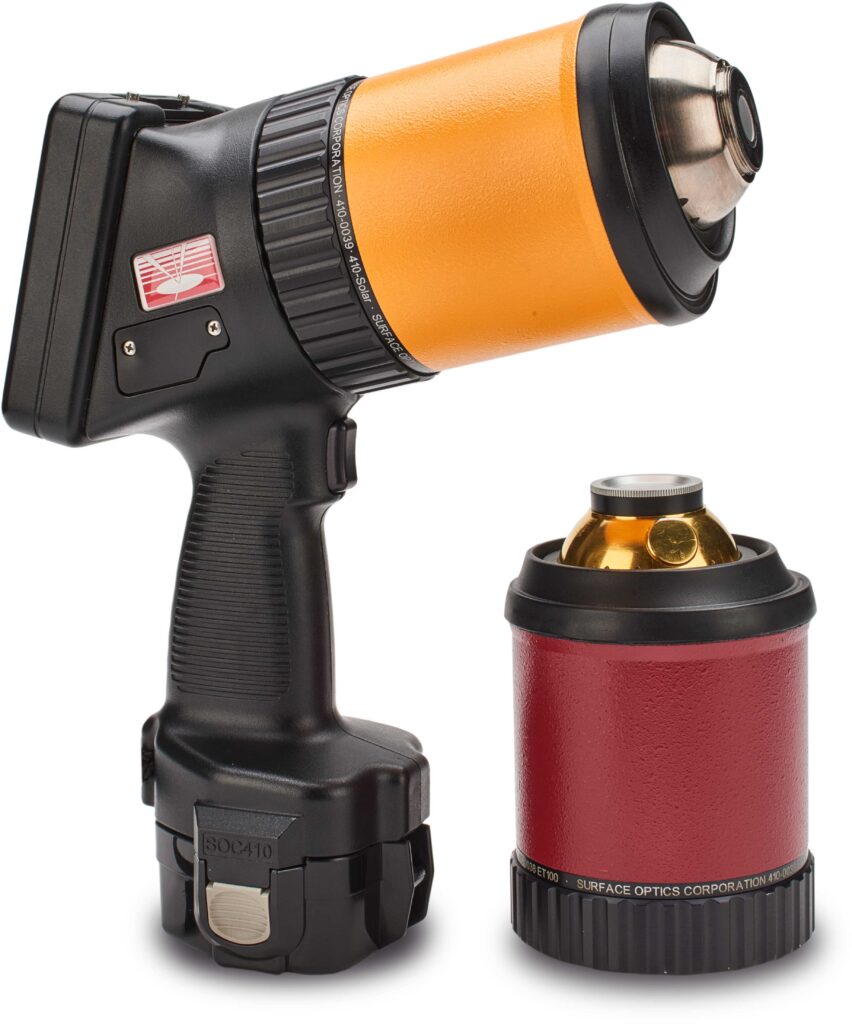Contents

Source: Wikipedia
Reflectometers: A Comprehensive Guide
Introduction
Reflectometers are essential instruments used for measuring the reflectance of objects, indicating the amount of incident optical power that is reflected. In this context, we will focus on optical reflectometers that assess the reflection of light, typically within the infrared or ultraviolet spectral regions.
Free-space Reflectometers
Free-space reflectometers enable the measurement of reflectance using a free-space light beam. The reflectance often varies with the angle of incidence, leading to the development of optical reflectometers that can measure reflectance across a range of angles. Some devices are designed for a fixed angle, simplifying the optical setup.
Spectroscopic Reflectometers
Reflectance is wavelength-dependent, necessitating spectroscopic reflectometers capable of measuring reflectance across a wide spectral range. These devices, akin to spectrophotometers, are crucial for characterizing dielectric mirrors and coatings, where spectral resolution is vital for identifying thin-film errors.
Calibration
Calibrating reflectometers is critical for precise measurements, especially for near-perfect reflectance values. Advanced calibration methods, such as optical setups enabling power measurements of reflected light and reference light, are employed. Supermirrors may require specialized techniques like the cavity ring-down method for calibration.
Specular and Diffuse Reflections
Reflectometers primarily analyze specular reflections, but optical backscatter reflectometers can also assess diffusely scattered light. Other devices cater to optical scattering measurements, distinguishing between specular and scattered reflections to provide comprehensive information.
Polarization
The polarization of light during oblique incidence is significant in reflectometer measurements. Instruments may use linearly polarized or unpolarized light, with some accommodating defined polarization states. Ellipsometry, a related technique, involves analyzing the polarization state of reflected light in addition to its reflection properties.
Spatially Resolved Measurements
Reflectance variations across a sample can be spatially dependent. Certain reflectometers employ tightly focused light to map reflectance with high spatial resolution. Additionally, the ability to assess samples with curved surfaces is advantageous.
Fiber-optic Reflectometers
Fiber-optic reflectometers, particularly in optical fiber communications, offer temporal resolution alongside reflectance measurements. Optical time-domain reflectometers are commonly used for assessing fiber-optic links, aiding in fault localization and link maintenance.
Conclusion
Reflectometers play a crucial role in assessing reflectance properties across various samples and materials. From free-space to spectroscopic reflectometers, these instruments provide valuable insights into optical characteristics, aiding in diverse applications ranging from thin-film coatings to fiber-optic communications.

Source: Surface Optics Corporation
Feel free to comment your thoughts.



